Results 10,871 to 10,880 of 12094
Thread: Anandtech News
-
11-16-20, 11:24 AM #10871
Anandtech: NVIDIA Announces A100 80GB: Ampere Gets HBM2E Memory Upgrade
Kicking off a very virtual version of the SC20 supercomputing show, NVIDIA this morning is announcing a new version of their flagship A100 accelerator. Barely launched 6 months ago, NVIDIA is preparing to release an updated version of the GPU-based accelerator with 80 gigabytes of HBM2e memory, doubling the capacity of the initial version of the accelerator. And as an added kick, NVIDIA is dialing up the memory clockspeeds as well, bringing the 80GB version of the A100 to 3.2Gbps/pin, or just over 2TB/second of memory bandwidth in total.
More...
-
11-17-20, 12:25 PM #10872
Anandtech: The 2020 Mac Mini Unleashed: Putting Apple Silicon M1 To The Test
Last week, Apple made industry news by announcing new Mac products based upon the company’s new Apple Silicon M1 SoC chip, marking the first move of a planned 2-year roadmap to transition over from Intel-based x86 CPUs to the company’s own in-house designed microprocessors running on the Arm instruction set.
Since a few days, we’ve been able to get our hands on one of the first Apple Silicon M1 devices: the new Mac mini 2020 edition. While in our analysis article last week we had based our numbers on the A14, this time around we’ve measured the real performance on the actual new higher-power design. We haven’t had much time, but we’ll be bringing you the key datapoints relevant to the new Apple Silicon M1.
More...
-
11-17-20, 12:25 PM #10873
Anandtech: Marvell Announces 112G SerDes, Built on TSMC 5nm
So far we have three products in the market built on TSMC’s N5 process: the Huawei Kirin 9000 5G SoC, found in the Mate 40 Pro, the Apple A14 SoC, found in the iPhone 12 family, and the Apple M1 SoC, which is in the new MBA/MBP and Mac Mini. We can now add another to that list, but it’s not a standard SoC: here we have IP for a SerDes connection, now validated and ready for licensing in TSMC N5. Today Marvell is announcing its DSP-based 112G SerDes solution for licensing.
Modern chip-to-chip networking infrastructure relies on high speed SerDes connections to enable a variety of different protocols at a range of speeds, typically in Ethernet, fiber optics, storage, and connectivity fabrics. Current high-speed connections rely on 56G connections, and so moving up to 112G enables double the speed. Several companies have 112G IP available, however Marvell is the first to enable it in 5nm, ensure it is hardware validated, and offer it for licensing.
These sorts of connections have a number of measurements to compare them to other 112G solutions: the goal is to not only meet the standard, but offer a solution that uses less power, but also a lower potential error rate, especially for high-speed high-reliability infrastructure applications. Marvell is claiming that its new solution enables a significant power reduction in energy per bit transferred – up to 25% compared to equivalent TSMC 7nm offerings, along with tight power/thermal constraints and a >40dB insertion loss.
We typically expect data to travel down a connection like this as a series of ones and zeros, i.e. a 1-bit operation which can be a 0 or a 1, known as NRZ (non-return to zero) - however Marvell’s solution enables 2-bit operation, such as a 00, 01, 10, or 11, known as PAM4 (Pulse Amplitude Modulation). This enables double the bandwidth, but does require some extra circuitry. PAM4 has been enabled at lower SerDes speeds and at 112G before, but not for TSMC N5. As we move to even faster speeds, PAM4 will become a necessity to enable them. Regular readers may identify that NVIDIA’s RTX 3090 uses PAM4 signaling (on N7) to enable over 1000 GB/s of bandwidth with Micron’s GDDR6X – it can also be run in NRZ mode for lower power if needed.
Marvell says it is already engaged with its custom ASIC customers across multiple markets with the 112G implementation. Alongside the new 112G SerDes, the company says it is set to enable a complete suite of PHYs, switches, DPUs, custom processors, controllers, and accelerators built on 5nm, and that this initial offering is but the first step.
Related Reading- ‘Better Yield on 5nm than 7nm’: TSMC Update on Defect Rates for N5
- TSMC Boosts CapEx by $1 Billion, Expects N5 Node to Be Major Success
- Apple Announces The Apple Silicon M1: Ditching x86 - What to Expect, Based on A14
- Early TSMC 5nm Test Chip Yields 80%, HVM Coming in H1 2020
- Huawei Announces Mate 40 Series: Powered by 15.3bn Transistors 5nm Kirin 9000
- Intel Launches Stratix 10 TX: Leveraging EMIB with 58G Transceivers
- Intel’s New 224G PAM4 Transceivers
More...
-
11-18-20, 06:33 PM #10874
Anandtech: MediaTek Subsidiary to Acquire Intel Enpirion Business for $85 Million
Today an agreement between MediaTek subsidiary Richtek and Intel has been made for Richtek to acquire Intel’s power management solutions and controller product line known as Enpirion. The agreement will enable the sale of the division, subject to regulatory approval, for $85 million, and is expected to close in Q4.
Intel’s Enpirion business has been part of the company under the Programmable Solutions Group, formerly known as Altera, which was acquired by Intel in December 2015 for $16.7 billion. Altera had previously acquired Enpirion in May 2013 for $140 million, indicating a net loss over the seven years.
The Enpirion PowerSoC product line has been a series of system-on-a-chip DC-to-DC power converters, enabling higher power density and lower electrical noise compared to discrete power converter equivalents. The SoC nature also allows for on-the-fly adjustment at the time of delivery. This enables power delivery of a wide array of key products such as FPGAs and ASICs. Enpirion’s product portfolio also includes voltage bus converters, DDR memory terminators, high frequency technology, and 70A power rails.
In various reports, MediaTek has supposedly pointed to Enpirion’s high-frequency and high-efficiency power solutions as a key part of the acquisition, citing MediaTek’s push into enterprise-level system applications. The current belief is that MediaTek is planning to develop its ASIC business in a more serious manner than previously, targeting AI acceleration for hyperscalers.
For Intel, the sale of the Enpirion business clearly isn’t for the money – it sheds a division from the Programmable Solutions Group, allowing them to focus better on growth markets, according to Intel’s official statements. Chances are that Intel has an Enpirion equivalent elsewhere in the company to fill the gap, or might be involved in a purchasing agreement for the ex-Altera products that might use Enpirion. I highly suspect that Intel wasn’t actively marketing the product line for new customers that much anyway, and doesn’t see the market for potential revenue growth.
An Intel spokesperson gave us the following quote for this story:
Intel and Richtek, a subsidiary of MediaTek’s discrete power business, have signed an agreement for Richtek to acquire Intel’s Enpirion FPGA power product line. This transaction will enable Intel’s Programmable Solutions Group to focus on its core FPGA business and increase investment in high-growth opportunities that help position Intel to win key transitions to support 5G, edge computing, artificial intelligence, and the cloud.If we get a MediaTek statement, we will add it to the article.
It sounds as if the agreement is more for the IP than the people. Update from Intel: Intel has confirmed that the whole business (people + IP) are involved in the acquisition. It will be interesting to see what plans MediaTek has that involve the product line.
Related Reading- The SilverStone FX500 Flex-ATX 500W PSU Review: Small Power Supply With a Big Bark
- The NZXT C650 650W PSU Review: Designed To Last
- The 1STPlayer Steampunk 80+ Gold 750W PSU Review: A New Challenger Emerges
- Yet Another Gaming Accessory with RGB: Uninterruptible Power Supply!
- MediaTek Announces T700 5G Modem Powering Intel PCs Successfully Certified
- MediaTek Announces Dimensity 820 Mid-Range SoC With More Performance
More...
-
11-19-20, 08:44 AM #10875
Anandtech: The Corsair Gaming K100 RGB Keyboard Review: Optical-Mechanical Masterpiec
In today's review, we are taking a look at the successor of the Corsair K95 RGB Platinum, the K100 RGB. The new flagship of Corsair’s gaming keyboards is visually similar to the older K95, but the K100 RGB actually marks a significant improvement to Corsair's keyboard designs. With new optical-mechanical switches replacing traditional mechanical switches, a second rotary wheel, and more, Corsair has done a lot to not only stand apart in the crowded market for gaming keyboards, but has delivered something that's pleasantly one-of-a-kind.
More...
-
11-19-20, 11:16 AM #10876
Anandtech: ASRock First For B450 Ryzen 5000 Support: Beta BIOSes Now Available
One of the big unknowns for the newest AMD Ryzen 5000 processors is whether or not there will be support on all 400 series chipset-based motherboards. After initially saying that these motherboards would not be supported, AMD reversed course and said it would work with motherboard vendors to enable support. At the point when the processors were launched, AMD confirmed that the schedule for the first beta BIOSes for 400-series motherboards to support Ryzen 5000 would be in the January timeframe. It would appear that ASRock has beaten that estimate by six weeks.
For 500-series motherboards, users have to look for BIOS versions with a minimum of AGESA v1081 support to enable compatibility, which should have been available since August/September on almost all models. On launch day, most 500-series motherboards had updates to AGESA v1100, which should enable full performance. The question on 400-series support would be if these motherboards would be able to support, at a minimum, AGESA v1081.
One of the main barriers to this support is both the chipset and the BIOS firmware. Supporting a new generation of processors increases the side of the firmware, and some of the 400-series motherboards were not built for large firmware packages. This means that in order to support newer processors, sometimes support for older processors is lost. There are also some complications as it relates to new power management modes on the Ryzen 5000, which require chipset support, and so building a firmware/AGESA package that can enable this (or fool the software/sensors that require it) had to be newly built for 400-series motherboards.
Today, ASRock Is claiming that it has first revision beta BIOS firmware for its B450 series ready to go. These firmware packages should enable support for Ryzen 5000 processors on the respective B450 motherboards. Users should note that upgrading most of these motherboards requires a currently supported processor, unless the motherboard supports any sort of non-powered BIOS update function. These firmware packages are also expected to keep support for Ryzen 3000 processors as well, but not Ryzen 2000 or Ryzen 1000.
As with all beta BIOS firmware, your mileage may vary and there may still be bugs in a variety of settings or full performance may not yet be available. Warranty is often not applicable for users running a beta BIOS.ASRock B450 with Zen3 Support AnandTech Size Beta BIOS
VersionB450 Steel Legend ATX P3.70 B450 Pro4 ATX P4.50 B450 Pro R2.0 ATX P4.50 B450 Gaming K4 ATX P4.50 B450M Steel Legend mATX P.3.60 B450M Steel Legend (Pink) mATX P3.60P B450M Pro 4 mATX P4.60 B450M Pro 3 R2.0 mATX P4.60 B450M Pro4-F mATX P2.40 B450M Pro4-F R2.0 mATX P2.40 B450M/ac mATX P2.30 B450M/ac R2.0 mATX P2.30 B450M-HDV mATX P4.20 B450M-HDV R4.0 mATX P4.10 B450 Gaming-ITX/ac mITX P4.20
Update: it would appear that some of these BIOSes have already been pulled from the ASRock website, for reasons unclear.
Related Reading- Analyzing B450 for AMD Ryzen: A Quick Look at 25+ Motherboards
- AMD to Support Zen 3 and Ryzen 5000 CPUs on B450 and X470 Motherboards
- The ASRock B450 Gaming ITX/ac and B450 Gaming K4 Motherboard Reviews
- The MSI B450 Tomahawk Motherboard Review: More Missile Than Axe
More...
-
11-19-20, 01:02 PM #10877
Anandtech: Intel’s New NUC Laptop Kit: Whitebook Tiger Lake For All
The Next Unit of Computing branding, known as NUC (pronounced nu-ck), has long been associated with Intel’s small form factor designs featuring mobile-class processors. Last year Intel broke that design philosophy with the introduction of the NUC 9 Pro, known as Quartz Canyon, which allowed for a PCIe graphics card in a unified box. Intel today is announcing the next step on the NUC journey, with a pre-built laptop featuring 10nm Quad-Core Tiger Lake Processors.
The new NUC M15 Laptop Kit (codename Bishop County) is a pre-built notebook/laptop isn’t going to be something that an end-user can purchase outright. Rather than directly compete with its laptop partners, the unit is going to be offered to Intel’s laptop partners and channel customers for them to re-brand, potentially build upon, and then resell. This is why it is called the whitebook market, and why I used whitebook in the title of this article.
The NUC M15 design uses Tiger Lake (Intel Core 11th Gen) with Xe graphics in a platform designed to meet Intel Evo requirements for premium laptop design. This means meeting minimum specifications on wake-up time, charging, Thunderbolt, Wi-Fi, and screen power consumption. Evo still needs to be applied for by each brand that takes the M15 on for itself to modify and re-sell, but Intel states that offering this whitebook model will help a lot of regional retailers offer something a bit beyond the normal range of designs with their own unique modifications.
One of the first channel partners that emailed us about their implementation of the M15 was Schenker, a Germany-based retailer that sells across Europe and other locations. Normally we see the company implement Clevo whitebook designs, and so this is something a bit different – the Schenker Vision 15 is a 15.6-inch implementation in an aluminium unibody design with a touch display, 450 nit brightness, Thunderbolt 4, a PCIe 4.0-enabled SSD, and charging options enabled through Type-C on both sides.
Inside is the quad-core Tiger Lake Core i7-1165G7 with Xe graphics, and with the 73 Wh quick-charging battery the company claims it enables 14 hours of Wi-Fi or 10 hours of H.264 local video playback (measured at 150 nits). Schenker is claiming CBR23 scores of 1537 for ST and 5990 for MT, and will offer performance profiles for regular use or peak performance (the latter peaking at 84ºC and 40.8 dB(A) according to the company). The keyboard is listed as having LED-backlighting, and Schenker will support 25 country-specific keyboard layouts.
On storage and memory, Schenker will offer a variety of PCIe 4.0 storage options, as well as LPDDR4X-4267 memory options. Both Thunderbolt 4 ports will support charging, and an additional USB 3.2 Gen 2 port is available. A Linux version will be offered by Schenker’s sister company, TUXEDO Computers.
Shipping will start in January, with the base model offering a Shadow Grey design with the Core i7-1165G7, 16 GB LPDDR4X-4267, and a 250 GB Samsung 970 EVO Plus storage drive, which will retail in Europe for €1499 ($1531 USD equivalent pre-tax). Users after PCIe 4.0 storage will be able to select various capacities of Samsung 980 Pro. Standard warranty is 36 months. Schenker hasn’t yet applied for Intel Evo certification, but has stated that it meets the standards.
We are expecting other companies to offer similar versions of the NUC M15 design, however one of the issues with the whitebook market is differentiation. With the majority of the hardware in this unit going to be the same from other Intel channel partners, the margins might be very tight. Schenker states that they are a lead partner in this collaborative design.
Source: Intel
Related Reading- Schenker VIA 14: 14-inch Tiger Lake Magnesium Notebook, with 28W Version Inbound
- A 15-inch Thin Laptop For The Road: No More Dongles With The XMG DJ 15
- Intel Ghost Canyon NUC9i9QNX Review: NUC 9 Extreme Realizes the SFF Dream
- Intel NUC10i7FNH Frost Canyon Review
- Intel Unveils Specifications of NUC Element Modular PCs
- Intel Axes 10nm CPU Based NUC
- Intel's Bean Canyon (NUC8i7BEH) Coffee Lake NUC Review
More...
-
11-21-20, 11:11 AM #10878
Anandtech: GIGABYTE’s New AMD BRIX Series: Now With AMD Ryzen 4000U Renoir!
One of the key questions when AMD launched its latest Ryzen Mobile processor family, Renoir, was when the chip would be available in the Mini-PC space. At the time, AMD made motions saying that the key market they were focusing on was for laptops, but they wouldn’t preclude partners that were interested in building miniature systems. We’re starting to see a few of them trickle through into the market now, and GIGABYTE is also going down this route with its BRIX series. The new BRIX S Mini-PCs will be offered with up to a Ryzen 7 4700U, with Vega graphics, M.2 support, Wi-Fi 6, and 2.5 gigabit Ethernet
The History
GIGABYTE briefly toyed with AMD versions of its BRIX almost seven years ago now in 2013, using Richland-based dual core processors and AMD mobile graphics. These units, while an interesting foray into AMD small form factor machines, were a hot mess – I purchased a unit recently and it overheats to the point of shutdown! It was a rushed product with bad cooling, and was removed from the market as quickly as it had arrived. At that point we weren’t sure we would see other AMD Mini-PCs, and I was somewhat aware that the focus for these companies was solely on Intel.
The Present
With Zen, and now Zen2, that has changed. It would appear that a number of companies like GIGABYTE and its competitors now see AMD’s mobile offerings as competitive in this Mini-PC space where batteries aren’t needed. Because these processors are soldered on like in the mobile form factor, a system comes as a unit with the processor attached, and so finding the right performance in the right form factor where there is demand are all dimensions to the puzzle to ensure a relevant product.
Despite AMD focusing on laptops with its Zen2 ‘Renoir’ processors, offering eight cores and sixteen threads, as well as Vega 8 graphics all within a 15-25 W form factor, this processor is very appealing for the mini-PC space. GIGABYTE has developed two product lines for its BRIX series: the standard BRIX, and BRIX S which supports an additional 2.5-inch SSD.
With the new BRIX and BRIX S series, users will also be able to support four display outputs, such as HDMI 2.0a, DisplayPort, and dual USB-C with DP passthroughs – double supported by the Mac Mini M1. Two SO-DIMM DDR4 slots enable up to 64 GB of DDR4-3200 memory, and for storage, all units will have an M.2 slot for storage which supports PCIe 3.0 x4 or SATA M.2 drives. On the BRIX S, there is also a SATA port for a 2.5-inch drive as well.
For connectivity, the BRIX and BRIX S lines will have 802.11ax (Wi-Fi 6) with Bluetooth 5.1 and 2.5 gigabit Ethernet – this last one I wasn’t actually expecting in a form factor like this, which usually goes with one or two single gigabit Ethernet ports, but it appears GIGABYTE sees value in 2.5 GbE here. The Realtek 8125 solution is being used, which I believe is the cheaper option.
For ports, all models will have two USB 3.2 Gen 2 Type-C ports (with DP), and five USB 3.2 Gen 1 Type-A ports. Audio is provided through a Realtek ALC225 controller and a headphone jack, and the BRIX S models also come with an RS232 COM port for industrial use (a key market for these). Commercial customers can also get additional support with extra LAN/COM if speaking direct to GIGABTYE.
Each unit has 75/100 VESA mount support, and the power adaptor is capable of 135 W, which seems very aggressive for a 15 W system. Even with an M.2 storage drive, 64 GB memory, and all USB ports drawing power, I can’t see the system using more than 75 W, so 135 W is a bit overkill. GIGABYTE says it is using the 15 W TDP of these processors on its website, however with this power brick I can imagine this might be a typo and actually 25 W modes are being used.
We reached out to GIGABYTE USA on these, and they are still waiting on a timeframe and price for these models. It is suspected to be within the next few weeks, given that GIGABYTE HQ just issued a press release and the relevant product pages are now online.GIGABYTE AMD BRIX Series BRIX AnandTech BRIX S Ryzen 7 4800U
Ryzen 7 4700U
Ryzen 5 4500U
Ryzen 3 4300UCPUs Ryzen 7 4800U
Ryzen 7 4700U
Ryzen 5 4500U
Ryzen 3 4300U2 x SO-DIMM
Up to 64 GB DDR4-3200DRAM 2 x SO-DIMM
Up to 64 GB DDR4-3200M.2 2280 SATA / PCIe 3.0 x4 Storage M.2 2280 SATA / PCIe 3.0 x4
2.5-inch 9.0mm SATA1 x HDMI 2.0a
1 x DP
2 x DP over Type-CVideo 1 x HDMI 2.0a
1 x DP
2 x DP over Type-CRealtek 8125 2.5 GbE
Intel AX201 Wi-Fi 6Networking Realtek 8125 2.5 GbE
Intel AX201 Wi-Fi 62 x USB 3.2 G2 Type-C
5 x USB 3.2 G1 Type-A
Audio JackConnectivity 2 x USB 3.2 G2 Type-C
5 x USB 3.2 G1 Type-A
Audio Jack
RS23275mm and 100mm VESA 75mm and 100mm 135 W Power Adaptor 135 W 119.5 x 119.5 x 34.7 mm Dimensions 119.5 x 119.5 x 46.8 mm
Webpages
BRIX S:
- GB-BRR3H-4300: https://www.gigabyte.com/Mini-PCBare...3H-4300-rev-10
- GB-BRR5H-4500: https://www.gigabyte.com/Mini-PCBare...5H-4500-rev-10
- GB-BRR7H-4700: https://www.gigabyte.com/Mini-PCBare...7H-4700-rev-10
- GB-BRR7H-4800: https://www.gigabyte.com/Mini-PCBare...7H-4800-rev-10
BRIX:
- GB-BRR3-4300: https://www.gigabyte.com/Mini-PCBare...R3-4300-rev-10
- GB-BRR5-4500: https://www.gigabyte.com/Mini-PCBare...R5-4500-rev-10
- GB-BRR7-4700: https://www.gigabyte.com/Mini-PCBare...R7-4700-rev-10
- GB-BRR7-4800: https://www.gigabyte.com/Mini-PCBare...R7-4800-rev-10
Related Reading- GIGABYTE Unveils BRIX PRO Mini-PCs with Tiger Lake-U
- GIGABYTE Unveils Comet Lake-Based BRIX UCFF PC: 6 Cores, USB-C 3.2 Gen 2, & RS232
- GIGABYTE BRIX Gaming UHD GB-BNi7HG4-950 mini-PC Review
- GIGABYTE BRIX Gaming BXi5G-760 mini-PC Review
- ASRock Industrial's 4x4-BOX UCFF PC Series Goes Premium with Ryzen 4000U Renoir APUs
- AMD Succeeds in its 25x20 Goal: Renoir Crosses the Line in 2020
- AMD Details Renoir: The Ryzen Mobile 4000 Series 7nm APU Uncovered
- AMD Ryzen Mobile 4000: Measuring Renoir’s Die Size
More...
-
11-23-20, 11:14 AM #10879
Anandtech: AMD Precision Boost Overdrive 2: Adaptive Undervolting For Ryzen 5000 Comi
One of the ways that enthusiasts tinker with their processors is through overclocking: the attempt to get more performance by changing frequencies and voltages, up to the limits of the system. Another way is through undervolting – removing voltage from the processor to help lower temperatures and offer higher thermal headroom (or lower power consumption). It all depends on the silicon, and if it can support it: AMD (and Intel) have to set hard limits for production to enable sufficient yield and costs, but users on certain products can always poke the hardware to try and get something more. With this in mind, AMD is improving its range of overclocking tools to allow for adaptive undervolting of Ryzen 5000 processors.
More...
-
11-23-20, 02:54 PM #10880
Anandtech: “Microsoft Pluton Hardware Security Coming to Our CPUs”: AMD, Intel, Qualc
One of the key tenets of having good security is reducing how attackable your system is. This is what we call an attack surface – a system needs as few attack surfaces as possible, and as small as possible, to minimize any potential unwarranted intrusion. Beyond that, any additional security to detect and protect is vital. Both hardware and software can be used for that layer of additional security, and it becomes particularly important when dealing with virtualization, especially when it comes to virtual and physical attacks. In order to create a more unified system, Microsoft’s Pluton Security Processor, which works with Windows, is coming to the three major hardware vendors that implement the OS: AMD, Intel, and Qualcomm. What makes this different is that this is a physical in-hardware implementation that will be built directly into the future processors from each of the three companies.
Pioneered in both Xbox consoles and Microsoft’s Azure Sphere ecosystem, the Pluton Security Processor enables a full-stack chip-to-cloud security akin to a Trusted Platform Module (TPM). The TPM has been a backbone of server security over the last decade or more, providing a physical store for security keys and other metadata that verifies the integrity of a system. In the mobile space, a built-in TPM allows for other security verification, such as Windows Hello or Bitlocker.
Over time, according to Microsoft, a physical TPM module in these systems have become a weak point in modern security design. Specifically, gaining physical access to the system makes the TPM useless allowing for in-transit data hijacks or man-in-the-middle data pruning. Because a TPM is an optional addition to most server environments, that physical module-to-CPU data pathway becomes an important attack surface.
What the Pluton project from Microsoft and the agreement between AMD, Intel, and Qualcomm will do is build a TPM-equivalent directly into the silicon of every Windows-based PC of the future. The Pluton architecture will, initially, build an emulated TPM to work with existing specifications for access to the current suites of security protocols in place. Because Pluton will be in-silicon, it severely reduces the physical attack surface of any Pluton-enabled device.
The Pluton architecture seems to also allow for a superset of TPM features, perhaps to be enabled in the future. Microsoft highlights both the unique Secure HArdware Cryptography Key (SHACK) technology such that security keys are never exposed outside of the hardware environment, as well as community engagement such as what has been done through Project Cerberus, part of the Open Compute Project to enable root-of-trust and firmware authentication. We are told this is particularly important as it pertains to wide-spread patching issues.
All of the silicon vendors involved will have Pluton as the first layer of security – additional layers (such as AMD’s PSP) will go below this. From the three vendors, AMD has worked with Microsoft already on Pluton for consoles, so it should not be a big step to see Pluton in AMD consumer and enterprise silicon sooner rather than later, along with AMD’s other technologies such as Secure Encryption Virtualization. Intel stated that its long-term relationship with Microsoft should lead to a smooth Pluton integration, however the company declined to comment on a potential timeline. Qualcomm is the odd-one-out in a sense, as its cycles are a little different, but the company is quoted as stated that on-die hardware root-of-trust security is an important component of the whole silicon.
A number of parallels are being drawn between Pluton and Apple’s T2 security chip, which was moved inside the recently announced M1 processor.
Sources
More...
Thread Information
Users Browsing this Thread
There are currently 19 users browsing this thread. (0 members and 19 guests)




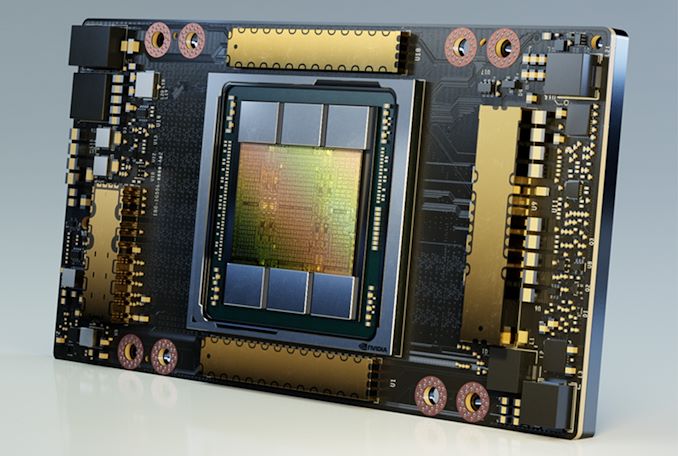

 Quote
Quote_575px.png)


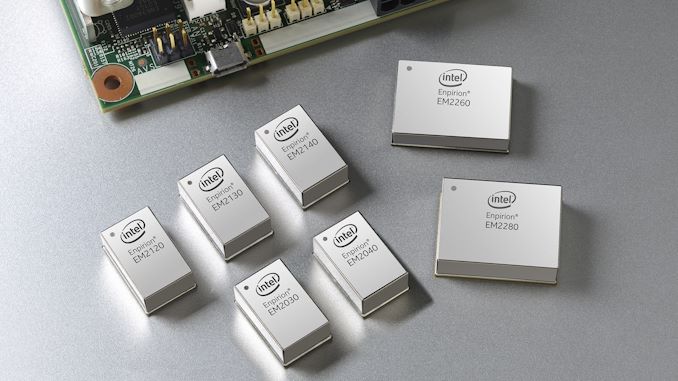
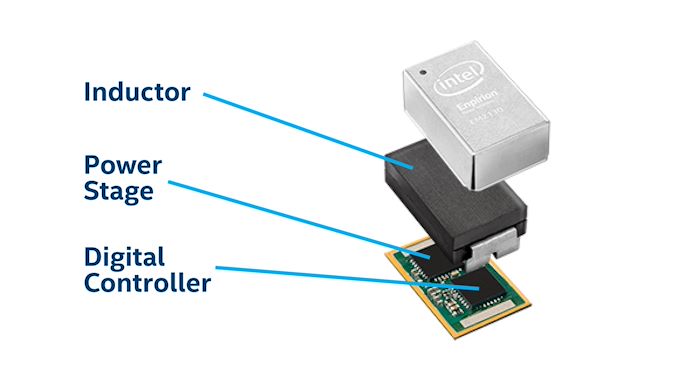


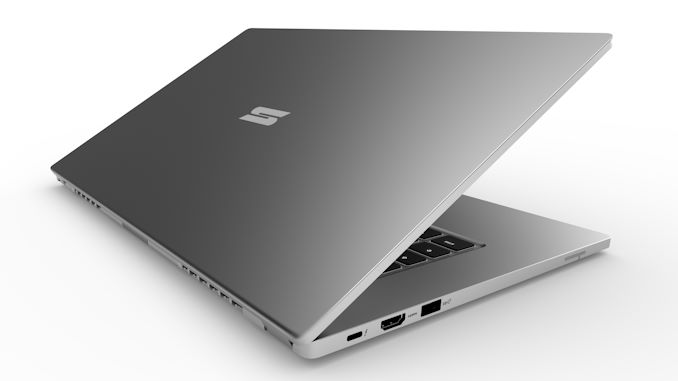

_575px.png)

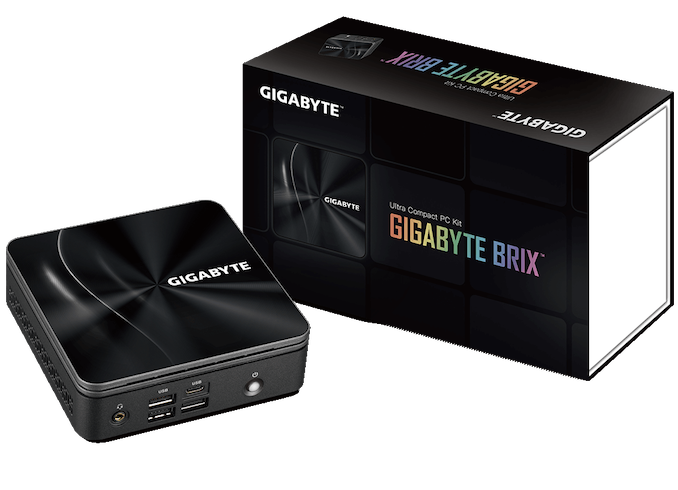
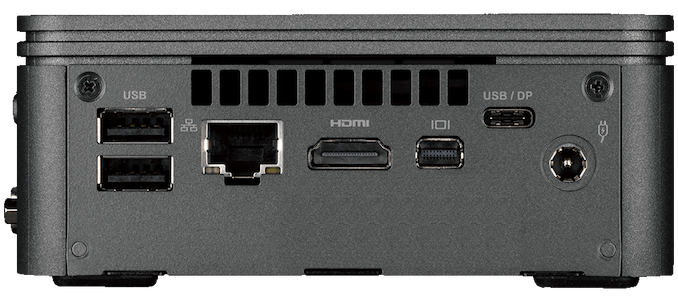
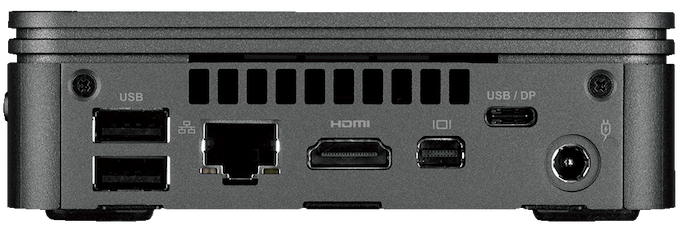
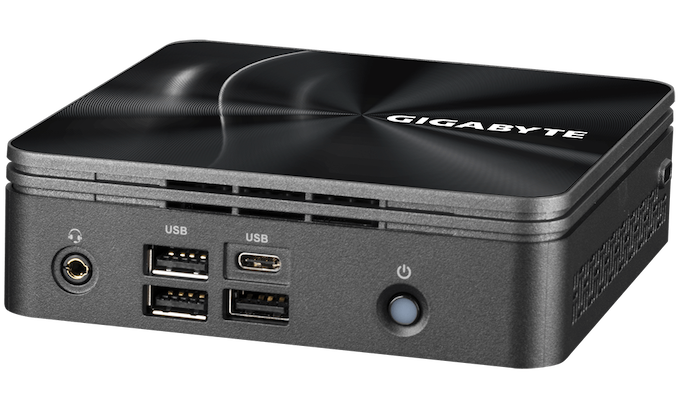
_thumb.png)
_575px_thumb.png)
_carousel_thumb.png)
_carousel_thumb.png)
_thumb.png)
_575px_thumb.png)


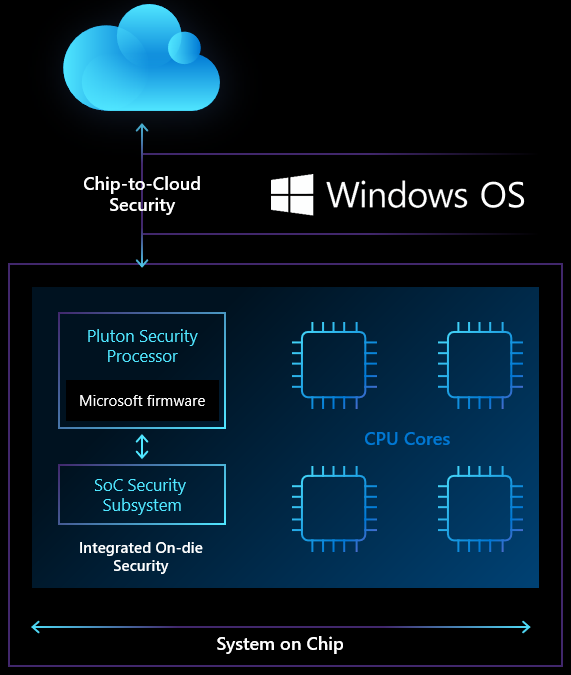
















Bookmarks